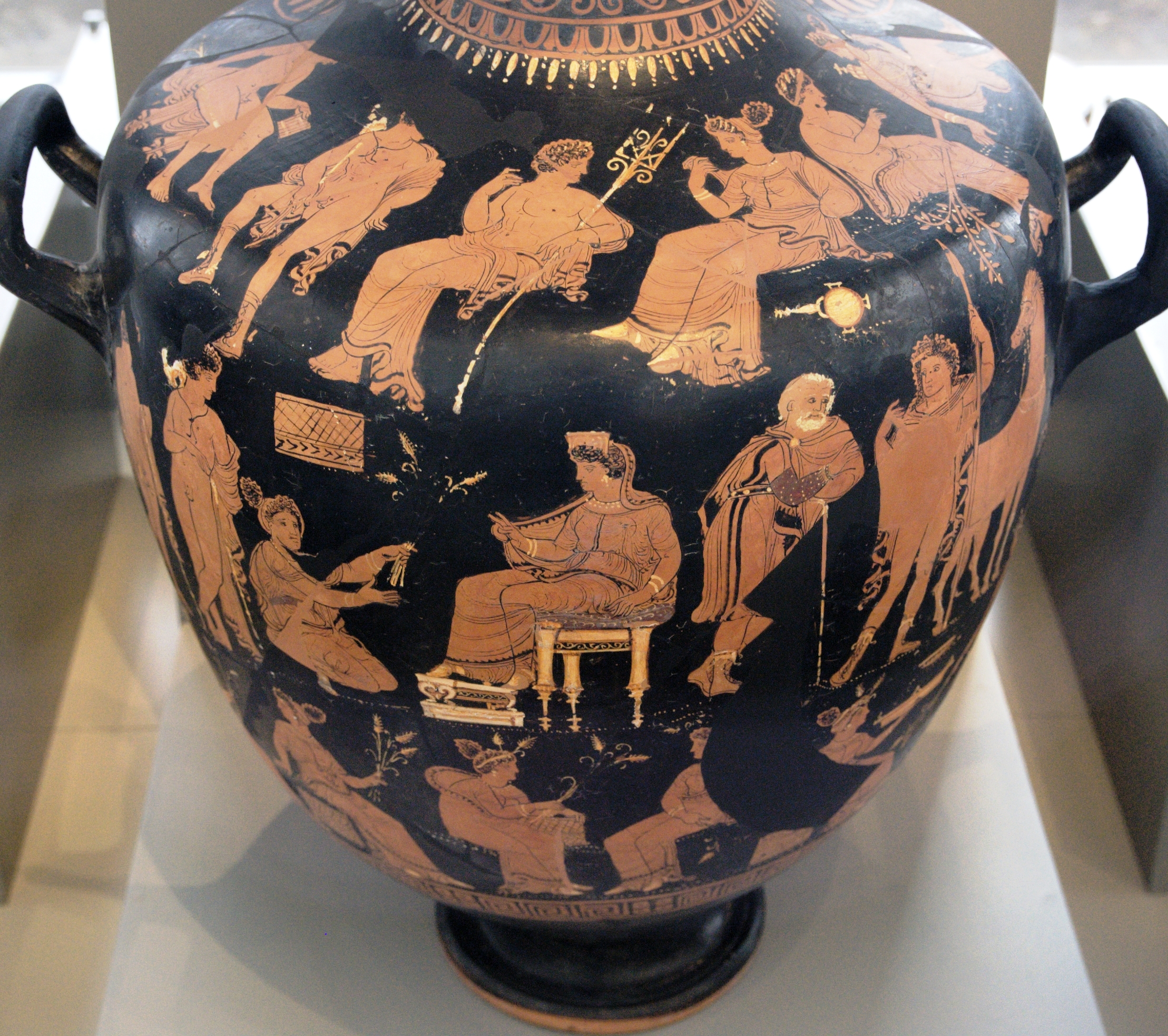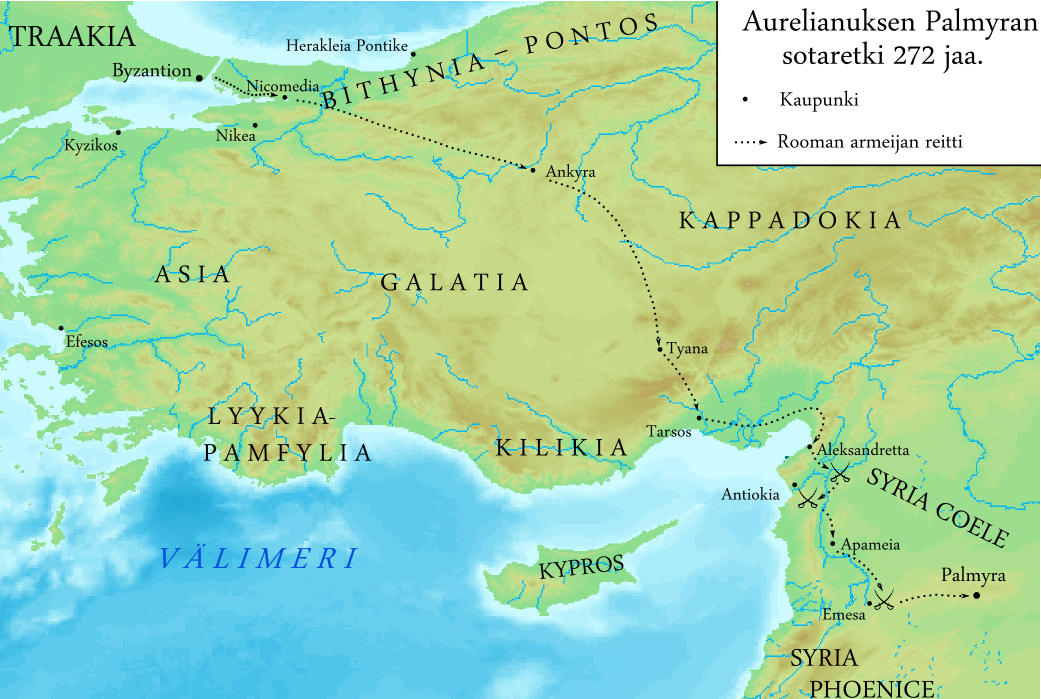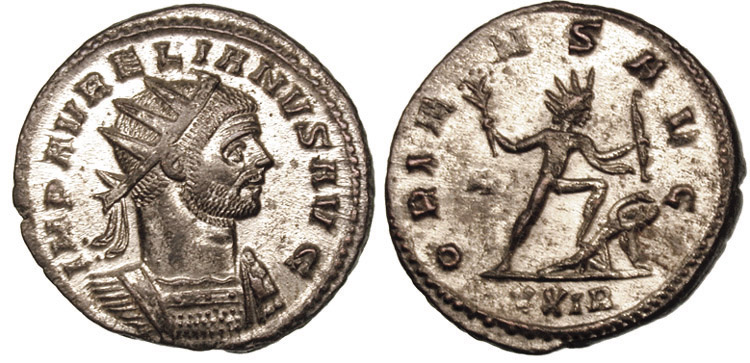|
Mithraism In Comparison With Other Belief Systems
:''This is an article on Mithraism in comparative mythology and comparative theology. See Mithraic mysteries for the main article.'' The Roman cult of Mithras had connections with other pagan deities, syncretism being a prominent feature of Roman paganism. Almost all Mithraea contain statues dedicated to gods of other cults, and it is common to find inscriptions dedicated to Mithras in other sanctuaries, especially those of Jupiter Dolichenus. Mithraism was not an alternative to other pagan religions, but rather a particular way of practising pagan worship; and many Mithraic initiates can also be found worshipping in the civic religion, and as initiates of other mystery cults. Comparisons with contemporary Roman gods Phanes Orphic speculation influenced the cult of Mithras at times. In Orphic cosmogony, Phanes emerges from the world egg at the beginning of time, bringing the universe into existence. There is some literary evidence of the syncretism of Mithras and Phanes. A list o ... [...More Info...] [...Related Items...] OR: [Wikipedia] [Google] [Baidu] [Amazon] |
Mithraism
Mithraism, also known as the Mithraic mysteries or the Cult of Mithras, was a Roman Empire, Roman mystery religion focused on the god Mithras. Although inspired by Iranian peoples, Iranian worship of the Zoroastrian divinity (''yazata'') Mithra, the Roman Mithras was linked to a new and distinctive imagery, and the degree of continuity between Persian and Greco-Roman practice remains debatable. The mysteries were popular among the Imperial Roman army from the 1st to the 4th century AD. Worshippers of Mithras had a complex system of seven grades of initiation and communal ritual meals. Initiates called themselves ''syndexioi'', those "united by the handshake". They met in dedicated ''mithraeum, mithraea'' (singular ''mithraeum''), underground Roman temple, temples that survive in large numbers. The cult (religious practice), cult appears to have had its centre in ancient Rome, Rome, and was popular throughout the Western Roman Empire, western half of the empire, as far so ... [...More Info...] [...Related Items...] OR: [Wikipedia] [Google] [Baidu] [Amazon] |
Italy
Italy, officially the Italian Republic, is a country in Southern Europe, Southern and Western Europe, Western Europe. It consists of Italian Peninsula, a peninsula that extends into the Mediterranean Sea, with the Alps on its northern land border, as well as List of islands of Italy, nearly 800 islands, notably Sicily and Sardinia. Italy shares land borders with France to the west; Switzerland and Austria to the north; Slovenia to the east; and the two enclaves of Vatican City and San Marino. It is the List of European countries by area, tenth-largest country in Europe by area, covering , and the third-most populous member state of the European Union, with nearly 59 million inhabitants. Italy's capital and List of cities in Italy, largest city is Rome; other major cities include Milan, Naples, Turin, Palermo, Bologna, Florence, Genoa, and Venice. The history of Italy goes back to numerous List of ancient peoples of Italy, Italic peoples—notably including the ancient Romans, ... [...More Info...] [...Related Items...] OR: [Wikipedia] [Google] [Baidu] [Amazon] |
Early Christianity
Early Christianity, otherwise called the Early Church or Paleo-Christianity, describes the History of Christianity, historical era of the Christianity, Christian religion up to the First Council of Nicaea in 325. Spread of Christianity, Christianity spread from the Levant, across the Roman Empire, and beyond. Originally, this progression was closely connected to History of the Jews in the Roman Empire, already established Jewish centers in the Holy Land and the Jewish diaspora throughout the Eastern Mediterranean. The first followers of Christianity were Jews who had Proselyte, converted to the faith, i.e. Jewish Christians, as well as Phoenicia, Phoenicians, i.e. Christianity in Lebanon, Lebanese Christians. Early Christianity contains the Apostolic Age and is followed by, and substantially overlaps with, the Patristic era. The Apostolic sees claim to have been founded by one or more of the Apostles in the New Testament, apostles of Jesus, who are said to have Dispersion of the A ... [...More Info...] [...Related Items...] OR: [Wikipedia] [Google] [Baidu] [Amazon] |
Plutarch
Plutarch (; , ''Ploútarchos'', ; – 120s) was a Greek Middle Platonist philosopher, historian, biographer, essayist, and priest at the Temple of Apollo (Delphi), Temple of Apollo in Delphi. He is known primarily for his ''Parallel Lives'', a series of biographies of illustrious Greeks and Romans, and ''Moralia'', a collection of essays and speeches. Upon becoming a Roman citizen, he was possibly named Lucius Mestrius Plutarchus (). Family Plutarch was born to a prominent family in the small town of Chaeronea, about east of Delphi, in the Greek region of Boeotia. His family was long established in the town; his father was named Autobulus and his grandfather was named Lamprias. His brothers, Timon and Lamprias, are frequently mentioned in his essays and dialogues, which speak of Timon in particular in the most affectionate terms. Studies and life Plutarch studied mathematics and philosophy in Athens under Ammonius of Athens, Ammonius from AD 66 to 67. He attended th ... [...More Info...] [...Related Items...] OR: [Wikipedia] [Google] [Baidu] [Amazon] |
Cautes Riding Bull, Hermannstadt
Cautes and Cautopates are torch-bearers depicted attending the god Mithras in the icons of the ancient Roman cult of Mithraism, known as Tauroctony. Cautes holds his torch raised up, and Cautopates holds his torch pointed downward. Interpretation In Mithraic images, Mithras either represents the sun, or is a close friend of the sun god Helios or Sol Invictus (Latin: ''the invincible sun'') with whom Mithras dines. So attendants Cautes and Cautopates are supposed to represent the stations of sunrise and sunset respectively, or perhaps the spring and autumn equinoxes, or equivalently the ascending (spring) and descending (autumnal) nodes of the Sun's apparent path on the celestial sphere. If eclipses of the sun and moon formed part of Mithraic symbolism, they could also represent the ascending and descending nodes where the Moon crosses the ecliptic. Depictions Both are depicted as smaller than Mithras to emphasize his significance, and both wear Persian style garments, no ... [...More Info...] [...Related Items...] OR: [Wikipedia] [Google] [Baidu] [Amazon] |
Gaziantep
Gaziantep, historically Aintab and still informally called Antep, is a major city in south-central Turkey. It is the capital of the Gaziantep Province, in the westernmost part of Turkey's Southeastern Anatolia Region and partially in the Mediterranean Region. It is located approximately east of Adana and north of Aleppo, Syria and situated on the Sajur River. The city is thought to be located on the site of ancient Antiochia ad Taurum and is near ancient Zeugma. Sometime after the Byzantine-ruled city came under the Seljuk Empire, the region was administered by Armenian warlords. In 1098, it became part of the County of Edessa, a Crusader state, though it continued to be administered by Armenians, such as Kogh Vasil. Aintab rose to prominence in the 14th century as the fortress became a settlement, hotly contested by the Mamluk Sultanate, Dulkadirids, and the Ilkhanate. It was besieged by Timur in 1400 and the Aq Qoyunlu in 1420. The Dulkadirid-controlled city fel ... [...More Info...] [...Related Items...] OR: [Wikipedia] [Google] [Baidu] [Amazon] |
Carnuntum
Carnuntum ( according to Ptolemy) was a Roman legionary fortress () and headquarters of the Roman navy, Pannonian fleet from 50 AD. After the 1st century, it was capital of the Pannonia Superior province. It also became a large city of approximately 50,000 inhabitants. Its impressive remains are situated on the Danube in Lower Austria halfway between Vienna and Bratislava in the Carnuntum Archaeological Park extending over an area of 10 km2 near today's villages of Petronell-Carnuntum and Bad Deutsch-Altenburg. History Military history Carnuntum first occurs in history during the reign of Augustus (6 AD), when Tiberius made it his base of operations as a Roman fort () in the campaigns against Maroboduus (Marbod). Legio XV Significant Romanisation happened when the town was selected as the garrison of the Legio XV Apollinaris, Legio XV before 14 AD. A few years later, it became the centre of the Roman fortifications along the Danube from Vindobona (now Vienna) to Br ... [...More Info...] [...Related Items...] OR: [Wikipedia] [Google] [Baidu] [Amazon] |
Greco-Roman Mysteries
Mystery religions, mystery cults, sacred mysteries or simply mysteries (), were religious schools of the Greco-Roman world for which participation was reserved to initiation rite, initiates ''(mystai)''. The main characteristic of these religious schools was the secrecy associated with the particulars of the initiation and the ritual practice, which may not be revealed to outsiders. The most famous mysteries of Greco-Roman antiquity were the Eleusinian Mysteries, which predated the Greek Dark Ages. The mystery schools flourished in Late Antiquity; Julian the Apostate, Emperor Julian, of the mid-4th century, is believed by some scholars to have been associated with various mystery cults—most notably the mithraism, mithraists. Due to the secret nature of the schools, and because the mystery religions of Late Antiquity were Persecution of Pagans by the Christian Roman Empire, persecuted by the Christian Roman Empire from the 4th century, the details of these religious practices are ... [...More Info...] [...Related Items...] OR: [Wikipedia] [Google] [Baidu] [Amazon] |
Aurelian
Aurelian (; ; 9 September ) was a Roman emperor who reigned from 270 to 275 AD during the Crisis of the Third Century. As emperor, he won an unprecedented series of military victories which reunited the Roman Empire after it had nearly disintegrated under the pressure of barbarian invasions and internal revolts. Born in modest circumstances, most likely in Moesia, Moesia Superior, he entered the Roman army in 235 and climbed up the ranks. He went on to lead the cavalry of the emperor Gallienus, until Gallienus' Gallienus#Assassination, assassination in 268. Following that, Claudius Gothicus became emperor until his own death in 270. Claudius' brother Quintillus then ruled for three months, before Aurelian took the empire for himself. Aurelian was chosen Roman emperor by the Illyrians, Illyriciani as one of themselves. During his reign, he defeated the Alamanni after a devastating war. He also defeated the Goths, Vandals, Juthungi, Sarmatians, and Carpi (people), Carpi. Aurelian ... [...More Info...] [...Related Items...] OR: [Wikipedia] [Google] [Baidu] [Amazon] |
Sol (Roman Mythology)
Sol is the personification of the Sun and a god in ancient Roman religion. It was long thought that Rome actually had two different, consecutive sun gods: The first, Sol Indiges (), was thought to have been unimportant, disappearing altogether at an early period. Only in the late Roman Empire, scholars argued, did the solar cult re-appear with the arrival in Rome of the Syrian Sol Invictus (), perhaps under the influence of the Mithraic mysteries. Publications from the mid-1990s have challenged the notion of two different sun gods in Rome, pointing to the abundant evidence for the continuity of the cult of Sol, and the lack of any clear differentiation – either in name or depiction – between the "early" and "late" Roman sun god. Etymology The Latin ''sol'' for " Sun" is believed to originate in the Proto-Indo-European language, as a continuation of the heteroclitic ''* Seh2ul- / *Sh2-en-'', and thus cognate to other solar deities in other Indo-European languages: Germani ... [...More Info...] [...Related Items...] OR: [Wikipedia] [Google] [Baidu] [Amazon] |
Helios
In ancient Greek religion and Greek mythology, mythology, Helios (; ; Homeric Greek: ) is the god who personification, personifies the Sun. His name is also Latinized as Helius, and he is often given the epithets Hyperion ("the one above") and Phaethon ("the shining"). Helios is often depicted in art with a radiant crown and driving a horse-drawn chariot through the sky. He was a guardian of oaths and also the god of sight. Though Helios was a relatively minor deity in Classical Greece, his worship grew more prominent in late antiquity thanks to his identification with several major solar divinities of the Roman period, particularly Apollo and Sol (Roman mythology), Sol. The Roman Emperor Julian (emperor), Julian made Helios the central divinity of his short-lived revival of Religion in ancient Rome, traditional Roman religious practices in the 4th century AD. Helios figures prominently in several works of Greek mythology, poetry, and literature, in which he is often described ... [...More Info...] [...Related Items...] OR: [Wikipedia] [Google] [Baidu] [Amazon] |
Phrygian Cap
The Phrygian cap ( ), also known as Thracian cap and liberty cap, is a soft Pointed hat, conical Hat, cap with the apex bent over, associated in Classical antiquity, antiquity with several peoples in Eastern Europe, Anatolia, and Asia. The Phrygian cap was worn by Thracians, Dacians, Persians, Medes, Scythians, Troy, Trojans, and Phrygians after whom it is named. The oldest known depiction of the Phrygian cap is from Persepolis in Iran. Although Phrygian caps did not originally function as liberty caps, they came to signify freedom and the pursuit of liberty first in the American Revolution and then in the French Revolution, particularly as a symbol of Jacobinism (in which context it has been also called a Jacobin cap). The original cap of liberty was the Roman ''Pileus (hat), pileus'', the felt cap of emancipated slaves of ancient Rome, which was an attribute of Libertas, the Roman goddess of liberty. In the 16th century, the Roman iconography of liberty was revived in emblem b ... [...More Info...] [...Related Items...] OR: [Wikipedia] [Google] [Baidu] [Amazon] |









